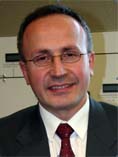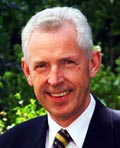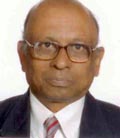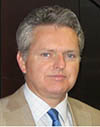Energy is a key element of the interactions between
nature and society and is considered crucial for the environment and
sustainable development. Many environmental issues are caused by or
relate to the production, transportation, conversion, and consumption of
energy, for example, acid rain, stratospheric ozone depletion, and
global warming/climate change. Recently, a variety of potential
solutions—ranging from renewable to hydrogen energy—to the current
environmental problems, particularly associated with the greenhouse gas
emissions, has evolved.
One thing is very true that achieving sustainable solutions to today’s
energy and environmental problems requires long-term planning and
actions. A secure supply of energy resources is generally necessary but
not sufficient for societal development. Sustainable societal
development, however, requires a sustainable supply of energy resources,
i.e., a secure supply that is readily and sustainably available in the
long term at reasonable cost and that can be utilized for all required
tasks without causing negative societal impacts. Effective and efficient
utilization of energy resources and systems/processes can also
contribute to sustainable development. Energy issues are particularly
prevalent at present and renewable energy resources appear to provide
one component of an effective sustainable solution. An understanding of
the thermodynamic aspects of sustainable development can help in taking
sustainable actions regarding energy.
This presentation will introduce some key pillars as the main targets
for current and future local and global problems, such as better
efficiency, better cost effectiveness, better use of energy resources,
better energy security, better environment and better sustainability,
and discuss these thoroughly for implementation. It will also discuss
various other key aspects, e.g., global warming, green energy,
energy-utilization patterns, policy and strategy development, energetic
and environmental measures, technology developments, infrastructure,
alternatives, as well as life cycle assessment and its role.
 Dr.
Ibrahim Dincer is a full professor of Mechanical Engineering in
the Faculty of Engineering and Applied Science at the University of
Ontario Institute of Technology (UOIT). Renowned for his pioneering
works in the area of sustainable energy technologies, he has authored
and co-authored numerous books and book chapters, more than 450 refereed
journal and conference papers, and many technical reports. He has
chaired many national and international conferences, symposia, workshops
and technical meetings. He has delivered nearly 150 keynote and invited
lectures. He is an active member of various international scientific
organizations and societies, and he serves as editor-in-chief (for the
International Journal of Energy Research by Wiley, as well as the
International Journal of Exergy and International Journal of Global
Warming by Inderscience), associate editor, regional editor, and
editorial board member on various prestigious international journals. He
is a recipient of several research, teaching and service awards,
including the Premier’s Research Excellence Award in Ontario, Canada, in
2004. He has made innovative contributions to the understanding and
development of sustainable energy technologies and their implementation,
particularly through exergy. He has actively been working in the areas
of hydrogen and fuel cell technologies, and his group has developed
various novel technologies and methods.
Dr.
Ibrahim Dincer is a full professor of Mechanical Engineering in
the Faculty of Engineering and Applied Science at the University of
Ontario Institute of Technology (UOIT). Renowned for his pioneering
works in the area of sustainable energy technologies, he has authored
and co-authored numerous books and book chapters, more than 450 refereed
journal and conference papers, and many technical reports. He has
chaired many national and international conferences, symposia, workshops
and technical meetings. He has delivered nearly 150 keynote and invited
lectures. He is an active member of various international scientific
organizations and societies, and he serves as editor-in-chief (for the
International Journal of Energy Research by Wiley, as well as the
International Journal of Exergy and International Journal of Global
Warming by Inderscience), associate editor, regional editor, and
editorial board member on various prestigious international journals. He
is a recipient of several research, teaching and service awards,
including the Premier’s Research Excellence Award in Ontario, Canada, in
2004. He has made innovative contributions to the understanding and
development of sustainable energy technologies and their implementation,
particularly through exergy. He has actively been working in the areas
of hydrogen and fuel cell technologies, and his group has developed
various novel technologies and methods.

The author and his colleagues have worked with over
a dozen federal agencies, as well as many industrial firms, on the
process of getting new technology out of their labs and into their own
innovation programs and/or into the broader markets of industry and
other agencies.
The focus of this paper is on metrics and flow
models for the outputs, at each stage of the process, and the barriers
and facilitators that impede or enhance the flow. It deals with the
notorious “Valley of Death” that slows or sinks items of technology at
various stages of the R&D/innovation process. It suggests standard
methodology for identifying and measuring the impacts, outputs, barriers
and facilitators encountered in the flow.
Criteria trees are suggested for connecting stage
outputs to the Critical Success Factors (CSFs) of the operating units,
parent organizations and other sponsors and clients served by the labs.
Some examples of common barriers and facilitators
are given, including the over-focus of many Technology Transfer Offices
on “paper” intellectual property (IP), such as patents and licenses,
versus “real” outputs and impacts, such as new products and applications
of technology that are transferred to and adopted by the various types
of potential users of the technology.
Specific examples are also drawn from studies by the
author and his colleagues in the fields of aerospace and automotive
research; homeland security, agriculture, transportation, health care,
and military R&D; and environment, energy and materials R&D.
 Dr.
Albert H. Rubenstein is founder and president of International
Applied Science and Technology Associates (IASTA) and professor emeritus
of Industrial Engineering and Management Sciences at Northwestern
University. At Northwestern, he founded and directed the Program of
Research on the Management of Research, Development and Innovation; and
the Master of Engineering Management program. He co-founded and directed
the Center for Information and Telecommunication Technology.
Dr.
Albert H. Rubenstein is founder and president of International
Applied Science and Technology Associates (IASTA) and professor emeritus
of Industrial Engineering and Management Sciences at Northwestern
University. At Northwestern, he founded and directed the Program of
Research on the Management of Research, Development and Innovation; and
the Master of Engineering Management program. He co-founded and directed
the Center for Information and Telecommunication Technology.
Dr. Rubenstein was on the faculty of M.I.T. from 1953-59 and on the
faculty of Northwestern since 1959. He has been a visiting professor at
the University of California (UC), Berkeley; UC Irvine; and UC San
Diego. He has authored and co-authored over 150 publications. His latest
books are Managing Technology in the Decentralized Firm (Wiley 1989 and
iUniverse 2001) and Installing and Managing Workable Knowledge
Management Systems (with Eliezer Geisler, Praeger 2003). He has
consulted for over 100 firms and technology-based government agencies in
the U.S. and a dozen other countries. In 1992 he was named the first
Pioneer in Innovation Management and Engineering Manager of the Year by
IEEE. He is a fellow of IEEE, AAAS, and the Society for Applied
Anthropology. He was editor of the IEEE Transactions on Engineering
Management and a director of Narragansett Capital Corp. for 25 years
each.
He has a B.S. in engineering from Lehigh University (1949) and an M.S.
and Ph.D. from Columbia University (1950 and 1954). In 1993 he received
an honorary Doctor of Engineering from Lehigh University. He was in the
Combat Infantry in WWII. Since moving to Washington in 2005, he
continues to be active in professional societies and consulting,
including a contract with NASA in the field of knowledge management.

TBA
 Dr. Veziroglu graduated from the City and Guilds College, the Imperial College of Science and Technology, University of London, with degrees in Mechanical Engineering (A.C.G.I., B.Sc.), Advanced Studies in Engineering (D.I.C.) and Heat Transfer (Ph.D.). After serving in some Turkish government agencies as a Technical Consultant and Deputy Director of Steel Silos, and then heading a private company, he joined the University of Miami Engineering Faculty, and served as the Director of Graduate Studies, Chairman of the Department of Mechanical Engineering, the Associate Dean for Research, and the Director of the Clean Energy Research Institute. Since May 2004 he is on leave from the University of Miami, and is establishing UNIDO-ICHET (United Nations Industrial Development Organization – International Centre for Hydrogen Energy Technologies) in Istanbul, Turkey, as its Director. He has published some 350 scientific reports and papers, edited 200 volumes of proceedings, and is the Editor-in-Chief of the monthly scientific journal; International Journal of Hydrogen Energy. He has been an invited lecturer and/or consultant on energy research and education to many countries and to several universities and research organizations in the United States. Dr. Veziroglu has organized several conferences and symposia on Alternative Energy Sources, Environment, Hydrogen Energy, Heat and Mass Transfer, and Remote Sensing, including the first major conference on Hydrogen Energy. He is a member of some twenty scientific organizations, and is a Fellow of the British Institution of Mechanical Engineers, the American Society of Mechanical Engineers and the American Association for the Advancement of Science. He is also the Founding President of the International Association for Hydrogen Energy. Dr. Veziroglu has been the recipient of several international awards, including Turkish Presidential Science Award, 1975, Honorary Professorship, Xian Jiaotong University, Xian, China, 1981, I. V. Kurchatov Medal, Kurchatov Institute of Atomic Energy, Moscow, U.S.S.R, 1982, Energy for Mankind Award, 1986, Twenty-Five Years' Service Award, American Nuclear Society, 1987, Turkish Superior Service to Mankind Award, 1991, Honorary Doctorate, Anadolu University, Eskisehir, Turkey, 1998, Honorary Member, Argentinean Academy of Sciences, 2000, and Honorary Doctorate, Donetsk State Technical University, Donetsk, Ukraine, 2001. In 2000, he was nominated for the Nobel Prize in Economics for both envisioning the Hydrogen Economy, and striving towards its realization.
Dr. Veziroglu graduated from the City and Guilds College, the Imperial College of Science and Technology, University of London, with degrees in Mechanical Engineering (A.C.G.I., B.Sc.), Advanced Studies in Engineering (D.I.C.) and Heat Transfer (Ph.D.). After serving in some Turkish government agencies as a Technical Consultant and Deputy Director of Steel Silos, and then heading a private company, he joined the University of Miami Engineering Faculty, and served as the Director of Graduate Studies, Chairman of the Department of Mechanical Engineering, the Associate Dean for Research, and the Director of the Clean Energy Research Institute. Since May 2004 he is on leave from the University of Miami, and is establishing UNIDO-ICHET (United Nations Industrial Development Organization – International Centre for Hydrogen Energy Technologies) in Istanbul, Turkey, as its Director. He has published some 350 scientific reports and papers, edited 200 volumes of proceedings, and is the Editor-in-Chief of the monthly scientific journal; International Journal of Hydrogen Energy. He has been an invited lecturer and/or consultant on energy research and education to many countries and to several universities and research organizations in the United States. Dr. Veziroglu has organized several conferences and symposia on Alternative Energy Sources, Environment, Hydrogen Energy, Heat and Mass Transfer, and Remote Sensing, including the first major conference on Hydrogen Energy. He is a member of some twenty scientific organizations, and is a Fellow of the British Institution of Mechanical Engineers, the American Society of Mechanical Engineers and the American Association for the Advancement of Science. He is also the Founding President of the International Association for Hydrogen Energy. Dr. Veziroglu has been the recipient of several international awards, including Turkish Presidential Science Award, 1975, Honorary Professorship, Xian Jiaotong University, Xian, China, 1981, I. V. Kurchatov Medal, Kurchatov Institute of Atomic Energy, Moscow, U.S.S.R, 1982, Energy for Mankind Award, 1986, Twenty-Five Years' Service Award, American Nuclear Society, 1987, Turkish Superior Service to Mankind Award, 1991, Honorary Doctorate, Anadolu University, Eskisehir, Turkey, 1998, Honorary Member, Argentinean Academy of Sciences, 2000, and Honorary Doctorate, Donetsk State Technical University, Donetsk, Ukraine, 2001. In 2000, he was nominated for the Nobel Prize in Economics for both envisioning the Hydrogen Economy, and striving towards its realization.

New technologies potentially change corporate
governance dramatically. The virtual annual general meeting is a case in
point. In this presentation, however, we concentrate on the opposite
direction of interference. Here, corporate governance influences the
kind of new technologies and their characteristics. This happens in
interaction with the elements of each national corporate governance
system. These interactions can have substantial implications for the
choice of corporate technology strategies.
 Dr.
Klaus Brockhoff, in a teaching career spanning more than 40
years, has held business faculty positions at six universities,
including the University of Bonn (Germany), University of Kiel
(Germany), University of Lund (Sweden), New Jersey Institute of
Technology (United States), and currently, since 1999, WHU—Otto Beisheim
School of Management (Germany). A graduate of the University of Bonn and
the University of Münster, and a former research fellow at the
University of California, Berkeley, Dr. Brockhoff has documented his
research in the areas of technology management, innovation management,
business strategy, and business policy in 21 books and more than 280
articles, many of which were published in leading international research
journals, such as Management Science, Journal of Product Innovation
Management, IEEE Transactions on Engineering Management and Research
Policy. He has consulted for numerous government and business
organizations and has received two noteworthy awards, the Max Planck
Research Award and Karl Heinz Beckurts Award. Dr. Brockhoff is also an
elected member of the Berlin-Brandenburg Academy of Sciences (Berlin)
and the Academy of Technology (Berlin); he sat on the board of six
journals (including Research Policy, R&D Management and Technology
Analysis & Strategic Management), two corporations (Steuler
Industriewerke, Metro Group), and three foundations (VolkswagenStiftung,
Pro Futura Stiftungen, and WHU Foundation). He holds an honorary
doctorate from the University of Berne (Switzerland).
Dr.
Klaus Brockhoff, in a teaching career spanning more than 40
years, has held business faculty positions at six universities,
including the University of Bonn (Germany), University of Kiel
(Germany), University of Lund (Sweden), New Jersey Institute of
Technology (United States), and currently, since 1999, WHU—Otto Beisheim
School of Management (Germany). A graduate of the University of Bonn and
the University of Münster, and a former research fellow at the
University of California, Berkeley, Dr. Brockhoff has documented his
research in the areas of technology management, innovation management,
business strategy, and business policy in 21 books and more than 280
articles, many of which were published in leading international research
journals, such as Management Science, Journal of Product Innovation
Management, IEEE Transactions on Engineering Management and Research
Policy. He has consulted for numerous government and business
organizations and has received two noteworthy awards, the Max Planck
Research Award and Karl Heinz Beckurts Award. Dr. Brockhoff is also an
elected member of the Berlin-Brandenburg Academy of Sciences (Berlin)
and the Academy of Technology (Berlin); he sat on the board of six
journals (including Research Policy, R&D Management and Technology
Analysis & Strategic Management), two corporations (Steuler
Industriewerke, Metro Group), and three foundations (VolkswagenStiftung,
Pro Futura Stiftungen, and WHU Foundation). He holds an honorary
doctorate from the University of Berne (Switzerland).

Energy is an important aspect in the development of
any nation. In view of the rising energy demand and reducing sources of
conventional energy, energy conservation, management and applications of
non-conventional energy sources become imperative for a sustainable
future. Reduced sources of conventional energy are cause for great worry
among scientists, technologists, economists and political thinkers. We
are consuming more energy than can be produced by nature.
The other aspect is pollution added by these sources to our environment.
The more we use these sources, the poorer is our quality of life on this
planet. The environmental benefits of renewable energy (RE) are well
accepted and have been promoted by governments. It is found that
wherever REs are in use, people have improved quality of life, health,
sanitation, and reduced biomass.
The planet earth is fast making progress in the field of solar energy in
the form of exploiting it for commercial applications. Solar energy is
available abundantly and can be utilized for both thermal and electrical
applications. The solar thermal programs include promotion of hot water
systems for industrial, commercial and domestic users, solar cookers,
solar dryers and solar stills.
Solar photovoltaic is suitable for many applications where other energy
sources may not be feasible or cost effective. Solar photovoltaic
systems promoted are solar lanterns, solar home lighting systems, solar
streetlights, solar water pumps, etc. A significant initiative that has
been taken by many countries for increasing the use of solar
photovoltaic systems pertains to installation of decentralized power
plants for meeting the electrical energy needs of remote and isolated
villages.
Apart from harnessing solar and wind energy, tidal power and biomass
power generation are the other potential energy sources which are
attracting energy agencies to tap their power potential. Power
generation based on biomass holds great promise as various countries are
producing huge amounts of crop residues every year. Biogas production is
one of the major programs all over the world to cater to families for
helping rural populations in their energy needs. These plants are
estimated to be generating fuel gas equivalent to many billions of tons
of wood fuel per year and simultaneously producing enriched organic
fertilizer as artificial fertilizers are harmful for the earth.
Wind power is one of the major contributors to the power network. India
has been recognized as a new “wind super power” for its development in
this field. India has developed small hydro power projects (SHP) of up
to 3MW capacity.
The program on new technologies covers chemical sources of energy
including fuel cells, hydrogen energy and geothermal energy, alternate
fuels for surface transportation and ocean energy. The R&D activities
are supported in relation to these technologies in national laboratories
and companies. Hydrogen energy systems are making inroads in several
directions. All the major car companies have built prototypes of cars
running on hydrogen fuel. Some cities have started demonstration
projects using hydrogen fuel transit buses. Of course, hydrogen is
already being used as the fuel of choice for space programs around the
world. It will be used to power aerospace transports to build the
international space station, as well as to provide electricity and
portable water for its inhabitants.
It is to be noted that the developing international consensus on the
reality of global warming will likely be followed over the next 5-10
years. Advocates of REs for sustainable development for the future have
hoped for impetus from the international response to global climate
change. There are sufficient environmental and public health benefits of
direct hydrogen fuel to justify moving ahead based on what we know
already about fossil fuels, their consequences and their limitations.
The economic case for hydrogen will continue to strengthen as well, even
without a global warming treaty. A climate change treaty would only
“sweeten the pot.”
Renewable energy (RE) provides the solution and also allows the
progressive and non-traumatic transition of today’s energy sources
toward feasible, safe, reliable and complete sustainable energy chains.
Development of RE technologies is the way to supply energy to isolated
places, many of them in India, Latin America and the Caribbean, which
represent where two thirds of the population lives.
With vast natural resources the world is all set to make remarkable
progress in power generation from renewable sources that are cost
effective and eco-friendly. The renewable energy industry all over the
world is a small but rapidly growing industry.
The agreement recently made internationally, to limit the world’s
greenhouse gas emissions, gives an extraordinary chance to emphasize
renewable energy as a true tool for recovering air quality. The coming
decade will definitely see greater and greater use of “green power” so
as to ensure less dependence on fossil fuels and also in order to
prevent environmental degradation.
 Professor
I. P. Jain was born in Lahore (then India) on November 25,
1946, and has had a brilliant academic career with an M.Sc. Physics
obtained in1969 (first position Gold Medalist) and Ph.D. in Physics in
1976 in the field of thin film technology from the University of
Rajasthan in Jaipur, India. He worked for more than a year during
1983-84 with Nobel Laureate for Physics for 1981 Prof. Kai Siegbahn in
the field of surface science at the University of Uppsala, Sweden, and
earned the SIDA (a Swedish Institute and Development Agency) Diploma.
Professor
I. P. Jain was born in Lahore (then India) on November 25,
1946, and has had a brilliant academic career with an M.Sc. Physics
obtained in1969 (first position Gold Medalist) and Ph.D. in Physics in
1976 in the field of thin film technology from the University of
Rajasthan in Jaipur, India. He worked for more than a year during
1983-84 with Nobel Laureate for Physics for 1981 Prof. Kai Siegbahn in
the field of surface science at the University of Uppsala, Sweden, and
earned the SIDA (a Swedish Institute and Development Agency) Diploma.
Professor Jain worked in various academic positions at the University of
Rajasthan and served as an assistant professor of physics from
1975-1980, associate professor of physics from 1980- 2000, and professor
and director of the Centre for Non Conventional Energy Resources, which
was created by him because he saw the importance of renewable energy for
sustainable development in the present world.
He was awarded CSIR (Scientific and Industrial Research) Fellowships in
1969-1972 and DAE (Department of Atomic Energy) Fellowships in
1973-1975. In May 2008 he was awarded the Emeritus Scientist position by
the Council of Scientific and Industrial Research, Government of India,
and he was among 20 such scientists in the country. He received the SIDA
(Sweden) Fellowship in 1983-84, with Nobel Laureate Prof. Kai. Siegbahn;
and the Commonwealth UK Fellowship in 1997 for helping universities in
South Africa, Zimbabwe and Kenya.
Professor Jain’s fields of research interest are hydrogen storage
materials and applications, thin films, surface and interfaces, ion beam
mixing at metal/silicon surfaces and interfaces, and amorphous
semiconductors. Prof. Jain has written 150 research publications during
1973 – 2009, out of which 90 appeared in international journals and 40
in national journals.
He assisted Nobel Laureate Prof. Kai Siegbahn in building the world’s
best high resolution ESCA machine and used it for his research; he
developed the Ultra High Vacuum Depth Selective Conversion Electron
Mossbauer Spectroscopy (DSCEMS) machine, a unique machine of its kind in
India for research in surface science.
Prof. Jain has established various research facilities in his
laboratory, e.g. Sivert-type instrument for hydrogen storage, UHV e-gun
evaporation, DSCEMS technique, high vacuum thermal and e-gun thin film
deposition units, low temperature 10k to 300k UV-Vis Spectrometer,
Mossbauer spectroscopy, and the ball milling machine. Prof. Jain was
instrumental in establishing various facilities at the University of
Rajasthan, e. g Transmission Electron Microscope (TEM) Laboratory in the
Zoology Department, Thin Film and Material Science Labs in the Physics
Department, X-ray Diffract Meter and Liquid Nitrogen Labs in the
University Scientific Instrumentation Centre (USIC).
During last nine years he has been involved in setting up a Centre for
Non-Conventional Energy Resources, which is a new center for research,
R&D and teaching in the field of renewable energy, which includes solar,
hydrogen, wind, bio-energy, bio-gas and other sources of energy. Over
the last two years he has initiated the M. Phil in Energy program for 22
students so that these students can develop careers in academics,
research and industry.

As we face the current global economic and environmental crisis, invention is arguably more important today than ever before. We need to inspire and nurture the next generation of inventors and ensure that life-improving and livelihood-generating technologies get into the hands of the nearly three billion people living on less than two dollars per day.
This presentation will discuss:
-
The Lemelson Foundation is working with partners to design educational approaches that engage high school and university students in invention, creating a pipeline of future inventors whose technologies will spark new enterprises, leading to job creation and social and economic development.
For example, over the past 15 years, the National Collegiate Inventors and Innovators Alliance (NCIIA) has launched hundreds of courses and student teams, leading to over 100 patents and enterprises based on new technologies.
-
Innovative ways the Foundation is funding social enterprises in developing countries—through grants, loans and equity investments—that are designing and disseminating sustainable technologies in the areas of water, energy, health, agriculture, and biodiversity.
For example, the Solar Electric Light Company (SELCO) in India has designed affordable solar technologies, ranging from lanterns and head lamps to home lighting systems, to serve families living at the base of the economic pyramid. SELCO has employed creative marketing, financing and distribution strategies to ensure the company’s profitability.
 Julia
Novy‐Hildesley is Executive Director of the Lemelson
Foundation. Established by Jerome Lemelson, one of U.S. history's most
prolific inventors, the Foundation sparks, sustains and celebrates
innovation and the inventive spirit.
Julia
Novy‐Hildesley is Executive Director of the Lemelson
Foundation. Established by Jerome Lemelson, one of U.S. history's most
prolific inventors, the Foundation sparks, sustains and celebrates
innovation and the inventive spirit.
The Foundation’s work is rooted in the belief that ingenuity is evenly
distributed throughout the world and that all people should have the
opportunity to realize their creative potential and benefit from the
power of technology. Programs in the U.S. and developing countries
support invention‐led economic, social and environmentally sustainable
development. The Foundation works with partners to recognize and
celebrate accomplished inventors; provide financial and mentoring
support to grassroots inventors; offer hands‐on opportunities that
enable young people to develop their budding scientific curiosity; and
disseminate technologies that improve people’s lives. To date the
Foundation has donated or committed more than $150 million in support of
its mission.
The unifying theme across Julia’s past and current work is forging
multi‐stakeholder partnerships to unleash innovation and develop
strategies for economic growth that sustain natural resources. She has
worked extensively toward these goals with government agencies,
nongovernmental organizations, and private sector partners in the U.S.,
Tanzania, Kenya, South Africa, Mexico, Peru, Bolivia, Indonesia, India,
French Polynesia, and other countries.
Prior to joining the Lemelson Foundation, Julia was the Director of the
World Wildlife Fund’s (WWF) Pacific office where she spearheaded the
organization’s strategy for marine conservation and public outreach on
the west coast of the United States, and implemented WWF’s program to
promote certification and eco‐labeling of well‐managed fisheries in
developing countries, in partnership with Unilever, the Dutch
transnational corporation. She also taught courses on ocean policy and
marine conservation at Stanford University in the Law School and Earth
Sciences, Anthropological Sciences, and Human Biology departments.
Prior to joining WWF and teaching at Stanford, Julia conducted research
in Madagascar, funded by a Fulbright Scholarship. She analyzed the
potential for non‐timber forest products to serve as economic
alternatives to slash and burn agriculture in the island’s rain forests
and published her work in the Journal of Ethnopharmacology. She
continued working in this domain for the USAID in Madagascar and the
World Bank in Washington D.C.
Julia earned a Master of Philosophy (MPhil) degree in International
Development from the Institute for Development Studies at Sussex
University in the United Kingdom, funded by a Marshall Scholarship. She
earned her Bachelor’s degree in Human Biology with a Minor in African
Studies and graduated Phi Beta Kappa from Stanford University. Julia
serves on the John F. Kennedy School of Government Women’s Leadership
Board, the Board of the World Affairs Council of Oregon, the Board of
Mercy Corps’ Social Innovations Committee, the Board of Directors of
Grantmakers of Oregon and Southwest Washington, the Board of Advisors of
the Anwarul Quadir Foundation and the Editorial Board of Innovations, a
journal published by the MIT Press. Her writing has been published in
the Journal of Ethnopharmacology, Innovations, and the Far Eastern
Economic Review. A Fellow of the Donella Meadows Leadership Fellows
Program, Julia was recognized as one of Portland Business Journal’s 2008
“Forty leading business people under the age of 40,” and featured in
Oregon Business Magazine’s 2005 “50 Great Leaders for Oregon.” She
speaks French, Spanish and Kiswahili.

This keynote describes the current status of the
Science of Science & Innovation Policy program at NSF. It explains the
current status of awards, and future likely emphasis areas. It also
describes the state of the federal Science of Science Policy interagency
group, and the associated Roadmap (scienceofsciencepolicy.net)
 Julia
Lane is the Program Director of the Science of Science &
Innovation Policy program at the National Science Foundation. Her
previous jobs included Senior Vice President and Director, Economics
Department at NORC/University of Chicago, Director of the Employment
Dynamics Program at the Urban Institute, Senior Research Fellow at the
U.S. Census Bureau and Assistant, Associate and Full Professor at
American University.
Julia
Lane is the Program Director of the Science of Science &
Innovation Policy program at the National Science Foundation. Her
previous jobs included Senior Vice President and Director, Economics
Department at NORC/University of Chicago, Director of the Employment
Dynamics Program at the Urban Institute, Senior Research Fellow at the
U.S. Census Bureau and Assistant, Associate and Full Professor at
American University.
Julia has published over 60 articles in leading economics journals, and
authored or edited five books. She has been the recipient of over $20
million in grants; from foundations such as the National Science
Foundation, the Sloan Foundation, the MacArthur Foundation, the Russell
Sage Foundation, the National Institute of Health; from government
agencies such as the Departments of Commerce, Labor, and Health and
Human Services in the U.S., the ESRC in the U.K., and the Department of
Labour and Statistics New Zealand in New Zealand, as well as from
international organizations such as the World Bank. She has organized
over 30 national and international conferences, received several
national awards, given keynote speeches all over the world, and serves
on a number of national and international advisory boards.
She is one of the founders of the LEHD program at the Census Bureau,
which is the first large scale linked employer-employee dataset in the
United States. She is also the PI of the NORC data enclave, a remote
access collaborative environment for researcher access to sensitive
business micro-data.
A native of England who grew up in New Zealand, Julia has worked in a
variety of countries, including Australia, Germany, Malaysia,
Madagascar, Mexico, Morocco, Namibia, Sweden, and Tunisia. Her
undergraduate degree was in Economics and Japanese from Massey
University in New Zealand; her M.A. in Statistics and Ph.D. in Economics
are from the University of Missouri in Columbia. She is fluent in
Swedish and German and speaks conversational French.

The earth’s biosphere, despite all its complexity, can be seen simply as a system with an aim. The system is very information intense, energy conserving, and resilient, with the aim of sustaining life for the overall system.
Humanity is finding that its aims, as manifested through human industrialization, are increasingly out of alignment with the aim of the earth’s biosphere. The greatest manifestation of this misalignment is global climate change, which is threatening the stability of earth’s climate system.
To solve the problem of climate change, humanity must not only drastically reduce our dependency on carbon-based fuels, but also adjust the aims of our industrial economy to align with the aim of the earth’s ecosystem. In a very real sense, business needs to rethink everything it does, and the biosphere will be an important teacher.
Information and communication technologies (ICT) will play important roles in this realignment. The biosphere is an information intense and energy efficient system, so the future global economy will also substitute information intensity for energy intensity. In the carbon-constricted economy of the future, ICT will be needed to reduce energy usage, research new technologies and make discoveries through information sharing made possible by continued development of information technology.
 Andrew J. McKeon is founder of InTERRAction, a consortium of experts from architecture, climate forecasting, communication, environmental science, law, management consulting and engineering who have joined together to help the corporate community address climate change and other environmental issues. He is principal of carbonRational, which advises both for-profit and not-for-profit companies on strategies to address climate change. He consulted for Xshares Advisors on the launch of the first carbon ETF (Exchange-Traded-Fund) traded on the NYSE and prepared a whitepaper on climate change and the carbon markets. He worked with Patriot National Bank, a Connecticut based Bancorp, to develop a green-lending practice; he advised TransitCenter on ways to use the emerging carbon markets to futher their mission of moving commuters out of cars and into mass transit; and he is working with scientists from NASA’s Goddard to find private sector applications for their Global Climate Model.
Andrew J. McKeon is founder of InTERRAction, a consortium of experts from architecture, climate forecasting, communication, environmental science, law, management consulting and engineering who have joined together to help the corporate community address climate change and other environmental issues. He is principal of carbonRational, which advises both for-profit and not-for-profit companies on strategies to address climate change. He consulted for Xshares Advisors on the launch of the first carbon ETF (Exchange-Traded-Fund) traded on the NYSE and prepared a whitepaper on climate change and the carbon markets. He worked with Patriot National Bank, a Connecticut based Bancorp, to develop a green-lending practice; he advised TransitCenter on ways to use the emerging carbon markets to futher their mission of moving commuters out of cars and into mass transit; and he is working with scientists from NASA’s Goddard to find private sector applications for their Global Climate Model.
Mr. McKeon has been the Northeast Region Assistant District Manager for The Climate Project since 2006, when he was invited by former Vice-President Al Gore to train in his presentation on the climate crisis. He has been an expert panel member at the UN and at SIM (Society of Information Managers). Mr. McKeon has also worked for Goldman Sachs; Bell Laboratories Market Research; the Institute of Foreign Study, Tokyo, Japan; and Bell Laboratories System Technologies. He has an MBA and M.S. Engineering from Columbia University, New York, USA; and a BS in Engineering from the University of Bridgeport, Connecticut, USA.

©2018 PICMET Inc. All rights reserved.